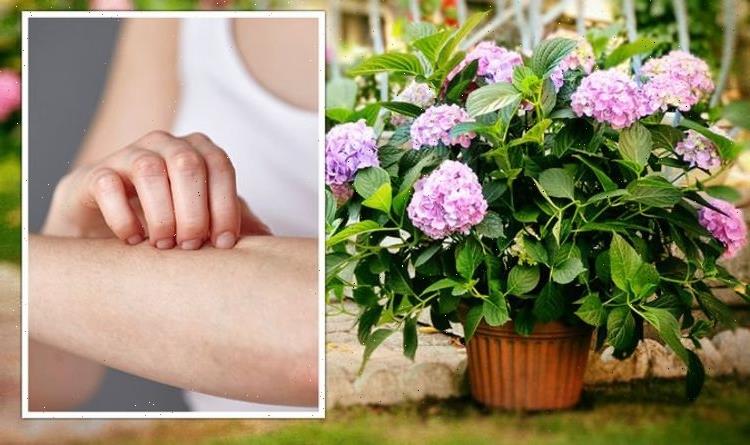
When you subscribe we will use the information you provide to send you these newsletters. Sometimes they’ll include recommendations for other related newsletters or services we offer. Our Privacy Notice explains more about how we use your data, and your rights. You can unsubscribe at any time.
Some of Britons’ favourite indoor and outdoor plants can actually pose a huge risk to both children and pets, according to new research. Indoor plants and gardening has surged in popularity over the last year with more people spending time in their homes and gardens. But some of the most beautiful indoor and outdoor plants can actually be the most harmful.
New research from experts at GardenBuildingsDirect.co.uk have found which outdoor plants cause the most harm to humans and pets.
Meanwhile, London Furniture Disposal have sought to find out which houseplants are the most harmful and how common they are in our homes.
Outdoor plants
Hydrangea
This popular plant actually contains cyanide.
However, you would need to eat a lot of the plant for it to be fatal.
Lily of the Valley
Lily of the Valley looks and smells incredibly but it can actually cause dizziness, sickness and a rash due to cardiac glycosides in the plant.
Oleanders
Oleanders should definitely be avoided by children and pets as they contain a high concentration of toxins in its nectar and sap.
A lot of exposure to this can cause severe digestive issues.
Rhododendron
Another popular garden plant in the UK, but it can actually be very poisonous.
Rhododendrons produce honey which can cause vomiting, confusion and heart problems.
Rhubarb
Surprisingly, rhubarb leaves are posies, unlike the fruit.
Eating too many of the leaves can cause your kidneys to shut down.
DON’T MISS
Kirstie Allsopp warns of ‘catastrophic’ problem with housing [INSIGHT]
Homeowner stunned as strangers sit down and eat dinner in her garden [UPDATE]
Gardening expert shares tool you should ‘never use’ to remove weeds [ANALYSIS]
Daffodil
This popular spring plant can be dangerous but it’s actually the bulb you need to worry about
If you have pets that like to dig, keep them away from your daffodils.
Eating the bulbs can cause vomiting, convulsion and diarrhoea.
Deadly nightshade
As the name suggests, this plant can be “deadly” and is most commonly found in central, eastern and southern parts of the UK.
Symptoms of nightshade poisoning include dilated pupils, problems balancing and a rash.
It may eventually lead to hallucinations and convulsions.
Looking for a new home, or just fancy a look? Add your postcode below or visit InYourArea
Houseplants
Devils Ivy
Devils Ivy is an extremely popular houseplant which is known for hanging down from baskets or the top of cupboards.
The plant is safe to touch but can be toxic to pets if ingested.
Peace Lily
Peace lilies are popular among Britons as they’re both easy to look after and air purifying.
However, if the plant is ingested, it can be toxic to pests.
Calla Lily
This plant is one that is normally grown outdoors, but more people are beginning to grow this gorgeous flowering plant indoors.
But be warned, the Calla Lily contains calcium oxalate crystals which can cause swelling and pain when swallowed.
Snake Plant
Known for its long, pointy leaves and stripes, this plant is incredibly low maintenance.
The plant is air-purifying but can cause nausea, vomiting, and diarrhoea in cats and dogs.
English Ivy
A lot of homes in the UK contain English Ivy which are known for their climbing abilities.
However, the plant can cause weakness, vomiting, throat swelling, dermatitis, rash, and ataxia.
A spokesperson for GardenBuildingDirect.co.uk said: “Many plants in our garden may appear innocent at first glance, but there are some silent assassins that can pose, in some cases, a deadly risk.
“It’s particularly important that in the summer months when a lot of these flowers are in full bloom we protect ourselves, younger children and even our pets too.
“Vomiting, rashes and heart problems can all occur from some of these plants so it’s important to remain educated and make sensible choices in our gardens.”
Source: Read Full Article


